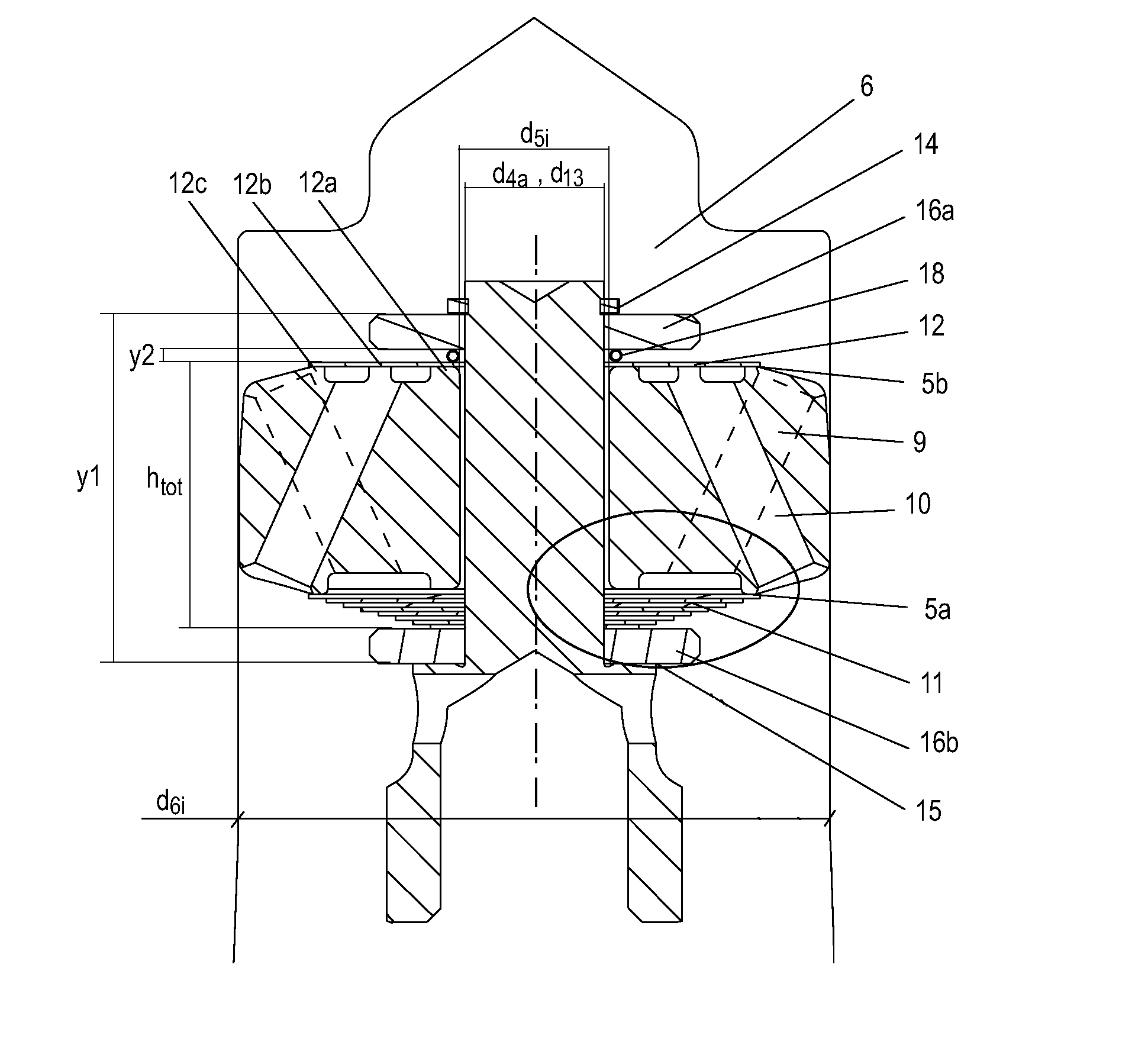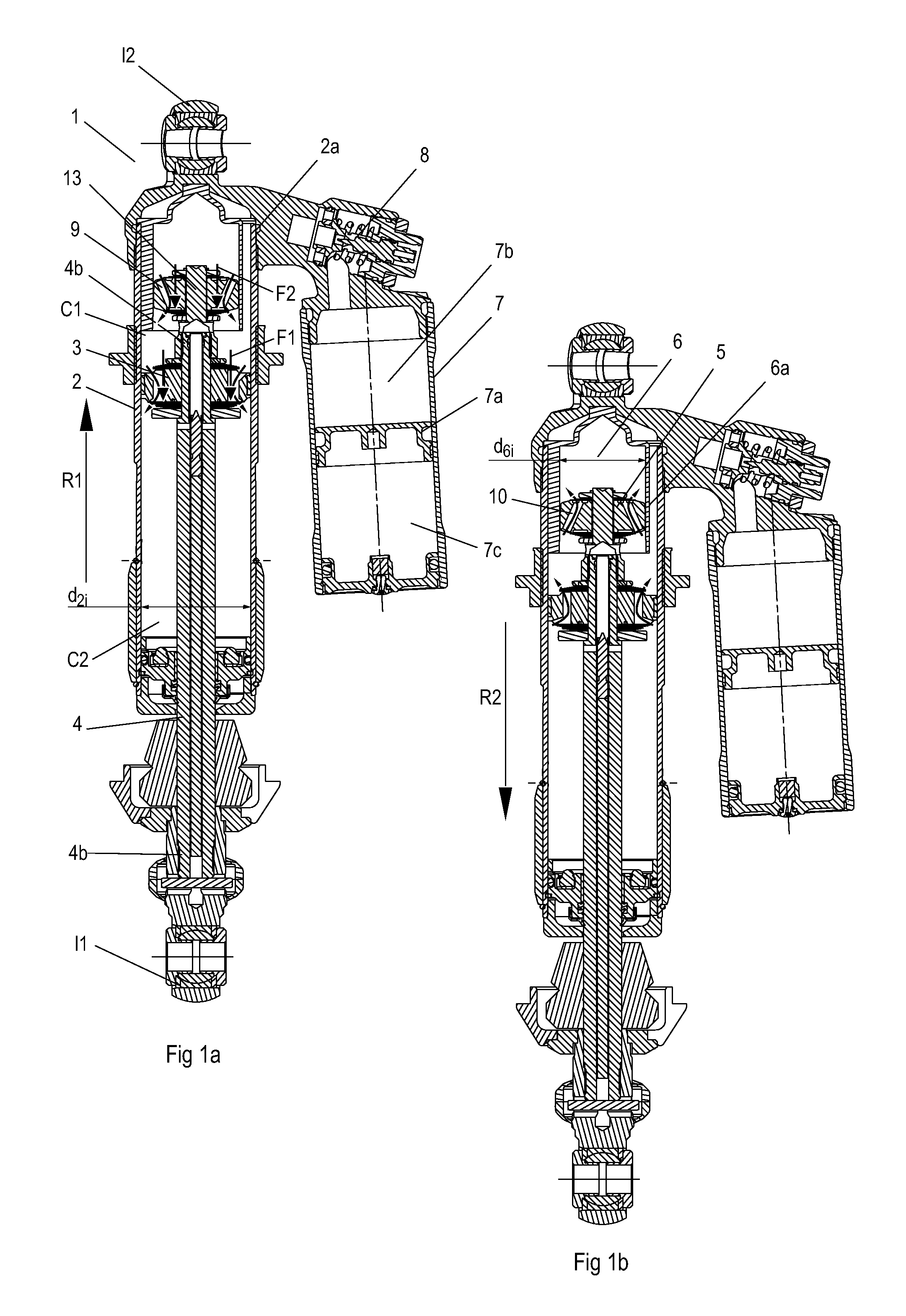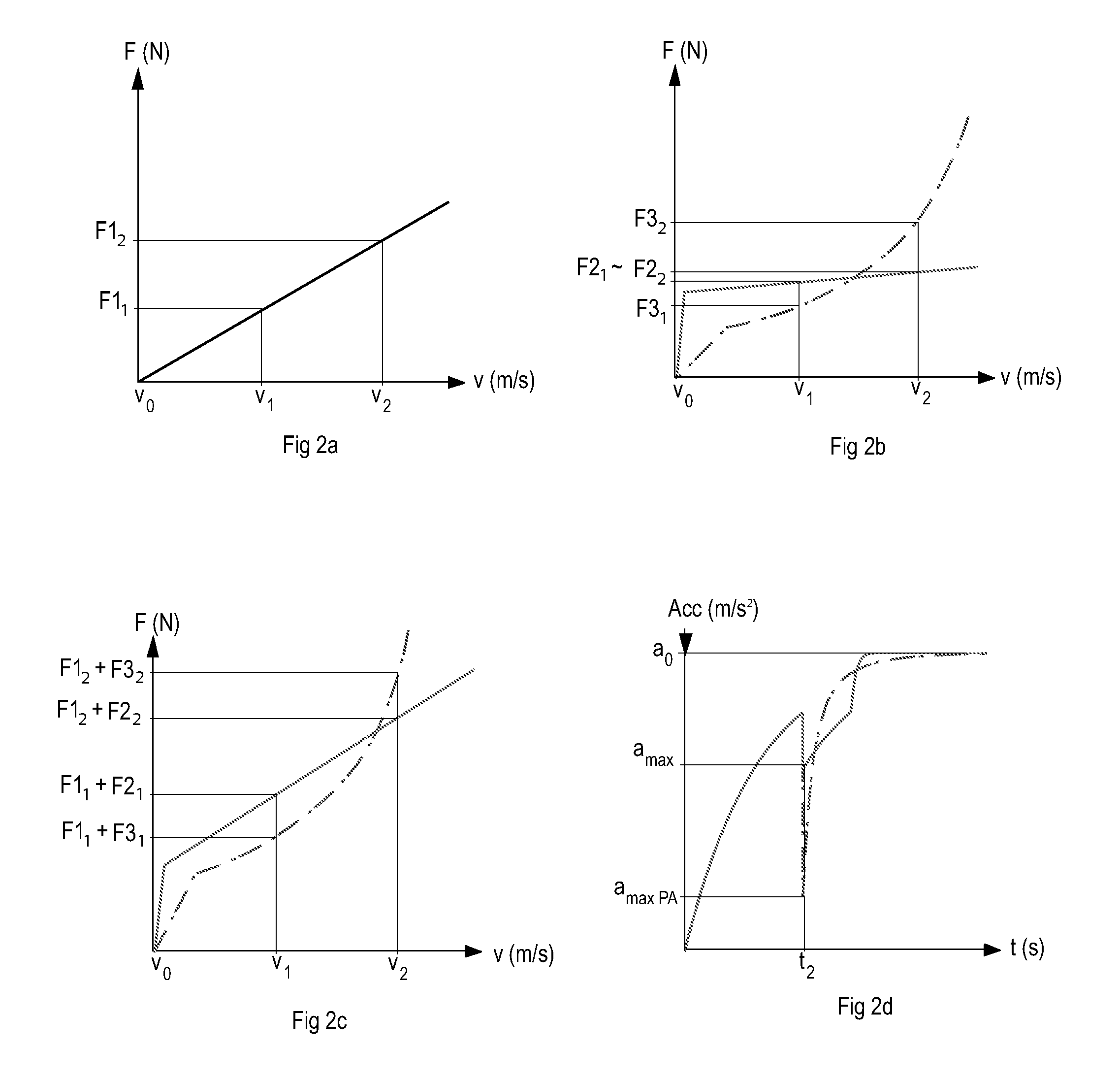Shock absorber with increasing damping force
a technology of shock absorber and damping force, which is applied in the direction of vibration damper, spring/damper, spring, etc., can solve the problems of increased force per unit time, increased vehicle handling difficulty, and rapid changes in the distribution of adhesion between the road surface and the different wheels
- Summary
- Abstract
- Description
- Claims
- Application Information
AI Technical Summary
Benefits of technology
Problems solved by technology
Method used
Image
Examples
Embodiment Construction
[0039]FIG. 1 shows a shock absorber 1 according to the invention. The shock absorber 1 in this embodiment comprises a damping cylinder 2 filled with damping medium M1 and divided into two damping chambers by a main piston 3 attached to a piston rod 4. The damping medium M1 is preferably hydraulic oil, which may contain associated additives of a type known in the art. Alternatively glycol and / or water may be used as fluid or damping medium. The two damping chambers may be referred to as a compression chamber C1 and a return chamber C2, since the main piston 3 moves axially in the damping cylinder 2 in a compression movement and a return movement in proportion to the movement of a vehicle wheel and chassis towards or away from one another in the directions R1, R2.
[0040]The second piston or damping piston 5, which has an outside diameter d5y, is seated on a damping piston holder part 13, located at an upper piston rod end 4a on the compression side of the main piston 3. The damping pis...
PUM
 Login to View More
Login to View More Abstract
Description
Claims
Application Information
 Login to View More
Login to View More - R&D
- Intellectual Property
- Life Sciences
- Materials
- Tech Scout
- Unparalleled Data Quality
- Higher Quality Content
- 60% Fewer Hallucinations
Browse by: Latest US Patents, China's latest patents, Technical Efficacy Thesaurus, Application Domain, Technology Topic, Popular Technical Reports.
© 2025 PatSnap. All rights reserved.Legal|Privacy policy|Modern Slavery Act Transparency Statement|Sitemap|About US| Contact US: help@patsnap.com



